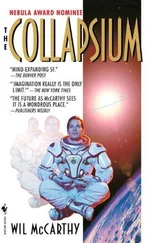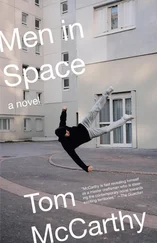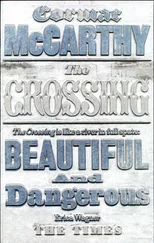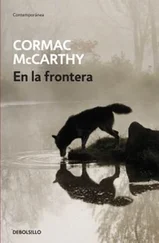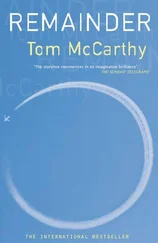The man hurries back towards the huts. Serge follows him. Inside the main one, he finds a huge square harp whose six strings are extended out beyond their wooden frame by finer wires that run through the hut’s air before breaching its boundary as well, cutting through little mouse-holes in the east-facing wall. In front of the harp, like an interrogation lamp, a powerful bulb shines straight onto it; behind it, lined up with each string, a row of prisms capture and deflect the light at right angles, through yet another hole cut in the hut’s wall, into an unlit room adjoining this one. There’s a noise coming from the adjoining room: sounds like a small propeller on a stalled plane turning from the wind’s pressure alone.
“What is this place?” Serge asks.
“You’re an observer, right?” the slender-fingered man says. Serge nods.
“Well, you know how, when you’re doing Battery Location flights, you send down K.K. calls each time you see an enemy gun flash?”
“Oh yes,” Serge answers. “I’ve always wondered why we have to do that…”
“Wonder no more,” the man says with an elfin smile. “The receiving operator presses a relay button each time he gets one of those; this starts the camera in the next room rolling; and the camera captures the sound of the battery whose flash you’ve just K.K.’d to us. You with me?”
“No,” Serge answers. “How can it do that?”
“Each gun-boom, when it’s picked up by a mike, sends a current down the wires you just pissed on,” the man continues, “and the current makes the piano wire inside this room heat up and give a little kick, which gets diffracted through the prisms into the next room, and straight into the camera.”
“So you’re filming sound?” Serge asks.
“You could say that, I suppose,” the man concurs.
“What’s the point of that?”
“Here, follow me.”
He leads Serge from this hut towards another. Pausing at the door of this, he knocks; then, when a voice inside shouts “Enter,” opens it no more than a slit’s width and ushers Serge inside. The interior’s suffused with red light. At a trough propped up against the far wall, a man with rolled-up sleeves is dunking yards of film into developing liquid, then feeding it on from there into a fixing tank. As the film’s end emerges from this tank in turn, he holds it up, inspects it and tears off sections, clipping these with clothes pegs to a short stretch of washing line, from where they drip onto the discarded strips on the room’s floor below them.
“Yuk,” Serge whispers beneath his breath.
“What?” the slender-fingered man asks.
“Nothing,” he replies.
“Look here,” Serge’s guide says, unclipping a strip of the developed film and pointing at dark lines that run, lengthways and continuous, along its surface. The lines-six of them-are for the most part flat; occasionally, though, they erupt suddenly, and rise and fall in jagged waves, like some strange Persian script, for half an inch, before settling down and running flat again. On the film’s bottom edge, beside the punch-holes, a time-code is marked, one inch or so for every second. The jagged eruptions appear at different points along each line: staggered, each wave the same shape as the one on the line below it, but occurring a quarter of an inch (or three-tenths of a second) later.
“So,” Serge’s elfin guide continues, “these kicks are made by the sound hitting each mike; and they get laid out on the film at intervals that correspond to each mike’s distance from the sound. You see them?”
“Yes,” Serge answers. “But I still don’t-”
“These ones ready to take through?” the guide asks the developer.
The other man nods; with his piano-player’s fingers, the guide unclips the other drip-dried strips, then leads Serge out to yet another hut. This one’s wall has a large-scale map taped to it; stuck in the map in a neat semi-circle are six pins. Two men are going through a pile of torn-off, line-streaked film-strips, measuring the gaps between the kicks with lengths of string; then, moving the string over to the map slowly, careful to preserve the intervals, they transfer the latter onto its surface by fixing one end of the string to the pin and holding a pencil to the other, swinging it from side to side to mark a broad arc on the map.
“Each pin’s a microphone,” the slender-fingered man explains. “Where the arcs intersect, the gun site must be.”
“So the strings are time, or space?” Serge asks.
“You could say either,” the man answers with a smile. “The film-strip knows no difference. The mathematical answer to your question, though, is that the strings represent the asymptote of the hyperbola on which the gun lies.”
“But there are several guns,” Serge says.
“And several types of kick on the film,” the man replies. “You can tell from their shape and thickness which are primary and which secondary, tertiary and so on. You just keep plotting all the intersections and eventually the whole thing maps itself out. It changes every few days, of course: soon as you people take one battery out, another one pops up for us to pinpoint…”
The Crossley’s engine comes to life outside. Walking back to it, Serge is acutely conscious of his feet percussing on the ground, and starts to tiptoe lest he cause more interference to the wires, even though the truck’s noise is much louder. On the way home, once they’ve left the woods and joined the road, he starts to drift off. To his mind, held in a web of strings and arcs above a darkness lit up by diffracted flashes, it seems that the groaning of the guns now comes as much from below as above. He sees it travelling through earth on worm-like cords, then seeping out like methane. As it rises past him, its vibrations make the truck’s metal bars pronounce, over and over again, the word Allerschütterer; then it rises further, up towards a high spot where a keen ear inclines above a battlefield that’s turned into a giant sounding-board. Just before he loses consciousness entirely, Serge sees Dr. Filip’s thin, filament-eyes glow above metal-grey whiskers-and hears, at a pitch barely audible and issuing from a spot that no amount of intersecting arcs could pinpoint, a little not-quite-German, not-quite-English voice describing twangling instruments humming about his ears.
On days when they’re assigned to Artillery Patrol, Serge and Gibbs fly further over on the German side than the machines on Art Obs duties, sending zone-call rather than clock-code signals back. The sequences are longer, running into double-figured strings of numbers, letters, dots and spaces: BY.NF.B30 C 8690; BY.COL.FAN NW B30C8690… His fingers ache by the end of every mission. When he’s not tapping sigs out, he’s photographing the ground with a camera attached to the plane’s lower wing. They have to fly in pre-set patterns and maintain a stable altitude to keep their photographs in sequence and to scale. They liaise with the photographic unit regularly; it’s in a former slaughterhouse two miles behind the airfield.
“I’d say this emplacement’s a dummy one,” Lieutenant Pietersen opines as he passes the monocular to Serge. “The tracks leading to the copse are so clear you could see them from ten thousand feet up. They may as well have drawn an arrow on the ground…”
“I see flashes from there a lot,” Serge tells him, “but they never seem quite right. Haven’t got that forward kick…”
“Stage effects,” Pietersen tuts. “Smoke and mirrors.”
He pins the photo to a board-askew, and covering the bottom corner of another photo which is slanted to the other side. Eight or nine more photos cling together to produce a mosaic of landscape across which lines-straight, curved and dotted-cut and swirl like markings on butterflies’ wings.
Читать дальше

